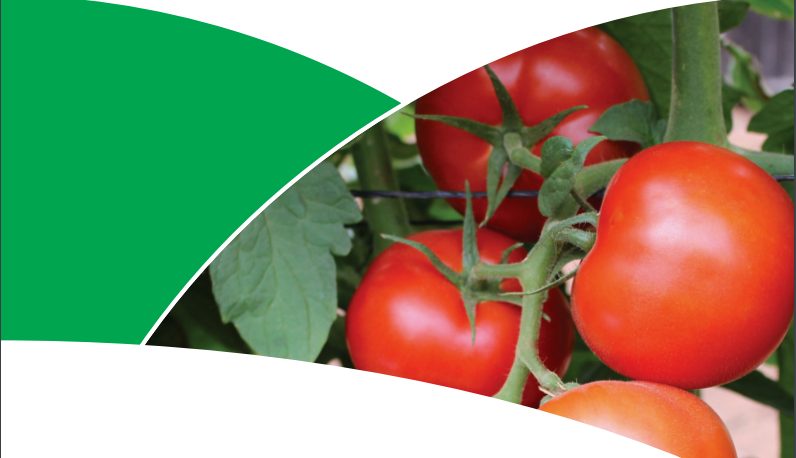One of the easiest areas to enter in agriculture in Zimbabwe is horticulture farming. I would recommend it any day because the prospects therein are inexhaustible. The top 5 most grown crops under horticulture in Zimbabwe are tomatoes, onions, cabbages, leafy greens, and potatoes. I deliberately sorted them in order thus tomatoes are the top horticulture crop in Zimbabwe. That forms part of the premise upon which why I am looking at tomatoes in this article. I have written several articles on tomato farming but today I just want to exclusively discuss the most talked about tomato variety in Zimbabwe. This means that is the variety you must go for once you venture into tomato farming; you will understand why.
Overview Of The Variety In Question
Tomato Variety Name
Trinity
Description
Trinity is a hybrid tomato variety that thrives either under greenhouse farming or open field farming. It is an indeterminate tomato variety with multi virus and strong bacterial resistances. Some of its signature attributes are high and uniform setting, high yields, uniformity of size throughout growth, and they keep bearing fruits for a quite a stretch. If planted in summer, the first fruits will reach maturity in just anything between 80 and 85 days. That is, counting from the day you transplanted them.
Trinity produces top quality tomatoes (3 weeks shelf life) that have firm walls and can each weigh between 140 and 160 grams. When the weather is cold shelf life can even exceed 1 month. Roughly 18 kilograms of tomatoes can be realized per plant under greenhouse farming. When it is open field farming, you can get around 15 kilograms per plant. The other great thing is that the tomatoes are typically uniformly sized when matured. The yield potential of Trinity is remarkable. During trial runs that ran for 4 consecutive seasons, as many as 8 sustained yields per plant were achieved. This implies that they can produce fruit for as long as 9 months. There are real-life examples of farmers experiencing the same (even bigger) yields as those.
Important Things To Consider
When doing open field cultivation it is recommended that you prune them. However, you must strike a healthy balance as to not over-prune. Otherwise they can still thrive perfectly well without pruning. You just have to bear in mind pruning has two advantages namely, early setting and uniformity in terms of plant size and fruit size. If you decide to prune then a plant must be pruned to anything between 1 and 3 stems. Row spacing should be 35 or more centimetres. This translates to anything between 12000 and 18000 plants on 1 hectare.
As for greenhouse farming, the approach is a bit different. Here you can prune down to 2 stems and stop the plants at a height you want. The most commonly practised approach is to train the plants to just 1 stem on a supporting string. Plant population in greenhouse farming follows that 2 to 3 plants must share 1 square metre.
The Prospects
Real Life Example
Last year a story was published by Charter Seeds of a lady farmer (Mrs Mhunduru) from Chiredzi. She decided to do tomato farming using the Trinity variety. Her plant population was 3000 plants. At the time the story was featured, she was realizing 75 crates of tomatoes per week for 2.5 months. She even remarked how she had managed to purchase 16 cattle, and 18 goats amongst other things from profits realized. Of note also is the fact that she was doing open field cultivation.
A crate of tomatoes currently averages between US$12 and US$15. On average, 1 kilogram of tomatoes is US$2 i.e. producer price. Imagine you plant 12000 Trinity plants one 1 hectare. Let us suppose you get 15 kilograms of tomatoes from each plant. That would be US$360 000 in gross revenue i.e. before factoring in the operating expenses which vary. Clearly there is lots of money to be made.
Let me look at a smaller scenario. Let us say you have 8 metres by 25 metres piece of land under a greenhouse. Following spacing recommendations, that would be 600 plants (if you choose to have 3 plants per square metre). If you get 18 kilograms of tomatoes per plant, that translates to 10.8 tonnes of tomatoes. In monetary terms that would be around US$21 600 in gross revenue. Getting a greenhouse set up on 8 metres by 25 metres costs anything between US$3000 and US$5000 or so (depending on whether the greenhouse is wooden, metal, or hybrid). I simply highlighted that to show you that you can recoup all the initial investments and expenses and still be left over with profit.
You can get Trinity seeds from Charter Seeds. They are found at number 48 Arbedeen Road Avondale in Harare or Farm and City outlets nationwide. You can also call on +263 719 599 253, +263 714 123 115, or +263 775 708 920. Alternatively you can look for providers selling Trinity seedlings. They cost around US$105 for 1000 seedlings. Seeds are currently at US$100 for 1000 seeds. This could revolutionize your life; that is me inspiring you to try out tomato farming with a special focus on the Trinity variety.









hie clive.
thAnk you for this article so informative.
how do access markets with the prices you are talking about here?.
how does this variety thrive during rainy season?
how do i prevent it from blights?
you can email the replies.
cheers
Hello Paul. Thanks for the feedback. All the questions you asked and more are answered in the Tomato farming business plan. You can contact Thembinkosi on our WhatsApp number wa.me/263778798072 to get your hands on it.
This sounds interesting. Kindly answer the questions below:
When is the best time to grow this variety on open field?
What is the spacing between rows?
Roughly how many plants should I grow to earn USD10 000.00?
What are the insecticides, pesticides, herbicides, fertilizers to use at every stage.
The land preparation issue, walk me through until transplanting.
woow it is doing good.